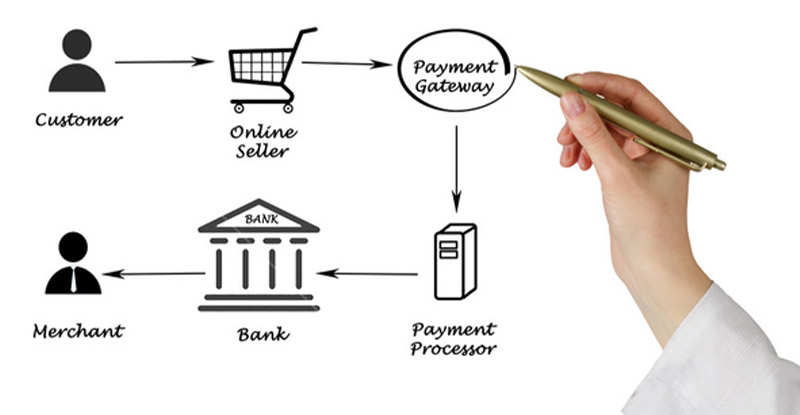Payment Processing: Understanding the Transaction Lifecycle and Its Stages


From initiation to completion, journey through the crucial stages of a transaction. We demystify the complexities of payment processing, ensuring you stay ahead in the digital commerce landscape. Read on to master the transactional flow!
Payment processing is a crucial aspect of any business conducting online transactions. It involves a step-by-step process from the moment the customer initiates the payment transaction to when the funds are deposited into the merchant’s account.
Understanding the transaction lifecycle and its stages are critical for both merchants and customers as it helps ensure smooth payments and prevent fraud. In this article, we will delve into the different stages of the payment processing lifecycle and provide insights into what happens behind the scenes during each stage.
But what exactly is payment processing, and how does it work? Let’s explore the world of payment processing and break down the key concepts that you need to know
Payment processing is the process of accepting and verifying payments made by customers for goods and services. When a customer makes a payment, their payment details, such as the card number and expiration date, are securely transmitted to a payment processor who handles the transaction.
The payment processor then verifies the customer’s information and confirms whether the transaction is authorized. If authorized, the payment is then transferred from the customer’s account to the merchant’s account.

Dive deep into the world of hassle-free payments. With ArtsylPay, each stage of your transaction lifecycle is nurtured, cared for, and optimized. Experience the future of payment processing today. Choose ArtsylPay and redefine your payment journey!
Payment processing involves various parties, including the customer, merchant, payment gateway, issuing bank, and acquiring bank:
These parties work together to ensure that the payment transaction is secure and efficient.

One of the key benefits of payment processing is that it enables merchants to accept multiple payment types, including debit cards, credit cards, and digital payments such as Apple Pay and Google Pay. By offering a range of payment options, merchants can increase the likelihood of customers completing transactions and reduce the risk of abandoned transactions.
Payment processing also involves security measures to protect both the customer’s information and the merchant’s account. Payment processors use encryption technology to ensure the payment details are securely transmitted.
Additionally, payment processors comply with various regulations, such as the Payment Card Industry Data Security Standard (PCI DSS) to ensure that merchants and payment processors maintain a secure environment for payment processing.
Payment processing supports a variety of payment methods to facilitate transactions between customers and businesses. Here are some commonly supported payment methods:

Contact Us for an in-depth
product tour!
Different businesses may support different combinations of these payment methods based on their industry, customer preferences, and technological capabilities.
Payment processing fees vary depending on the payment type and the transaction volume. These fees can include interchange fees, which are charged by the issuing bank, and processing fees, which are charged by the payment processor. While payment processing fees can seem like an additional cost for merchants, they are generally lower than the cost of managing cash payments, and payment processing can provide valuable benefits such as increased security and reliability.
As you can see, payment processing is a vital component of modern commerce, enabling merchants to securely process payments and offer a range of payment options to customers. While payment processing involves various parties and security measures, it can provide valuable benefits for businesses and customers alike.
By understanding the fundamentals of payment processing, merchants can choose a reliable and affordable payment processor and provide a secure and efficient payment experience for their customers.
Why get stuck in the old ways when you can embrace the future? From start to finish, ArtsylPay ensures every payment process is smooth, swift, and secure. Embrace a holistic approach to payment processing. Leap ahead with ArtsylPay!
Book a demo now
In the world of finance and business, the term «transaction lifecycle» refers to the various stages that a financial transaction goes through from the moment it is initiated to the point at which it is settled. This complex process can involve a multitude of parties and systems, each with its own role to play in ensuring the accuracy and security of the transaction. At each stage, there are risks and challenges that must be navigated, from compliance issues to technical glitches. Let’s discover the transaction lifecycle stages in more detail.
The first stage of payment processing is authorization. This is where the customer initiates the payment by providing their payment information, such as credit card details or bank account number. The payment processor, using the payment gateway, will then verify the customer’s information and ensure that the customer has sufficient funds to complete the transaction. If everything checks out, the payment processor will authorize the transaction.
The second stage of payment processing is settlement. This is where the authorized payment is sent to the acquiring bank (bank of the merchant) for settlement. The acquiring bank will then send the payment request to the issuing bank (customer’s bank) for payment approval. If the payment is approved, the issuing bank will transfer the funds to the acquiring bank, and the acquiring bank will deposit the funds into the merchant’s account.

The third stage of payment processing is clearing. This is where the payment processor reconciles the payments received from the issuing bank and the acquiring bank. It ensures that both banks have deducted and credited the correct amount for each transaction. The clearing process may take a few days to complete, depending on the banks’ settlement schedules.
The final stage of payment processing is chargeback. This occurs when the customer disputes a transaction and requests a refund. Chargebacks can be due to various reasons, such as fraud, dispute over the quality of the goods or services, or billing errors.
The payment processor will investigate the chargeback request and determine whether the customer is entitled to a refund. If the refund is approved, the payment processor will reverse the transaction and debit the merchant’s account.
Understanding the transaction lifecycle is essential for anyone involved in finance or business, as it enables them to manage risk, enhance efficiency, and ensure the smooth functioning of financial markets. So whether you’re an investor, a banker, or a corporate treasurer, mastering the transaction lifecycle is an essential part of achieving success in today’s global economy.
Whether you’re initiating, processing, or completing a transaction, ArtsylPay is by your side. Experience a payment platform that echoes reliability at each step. Supporting your business, one transaction at a time. Join the ArtsylPay revolution now!
Book a demo now
With ArtsylPay, you get the best of both worlds—automated invoice processing and quick payment processing capabilities. Embrace electronic funds transfers instead of wire transfers or check payments.
ArtsylPay is a cloud-based payments automation service that seamlessly integrates with InvoiceAction, Artsyl’s AP Automation solution. Unlike other solutions, ArtsylPay takes you beyond invoice processing. It completes your AP cycle, from receipt to processing, and even handles payments.
Maximize savings and revenue generation with ArtsylPay. Complete your AP cycle and payments efficiently with the following payment processing security features:
In the intricate dance of transaction lifecycles, ArtsylPay plays the perfect tune. We’re not just about payments; we’re about creating narratives of success, efficiency, and growth. Be part of a story that matters.
Book a demo now
Understanding the payment processing lifecycle and its stages is vital for both merchants and customers. It helps to ensure that the payment process is smooth and secure, preventing fraud and chargeback disputes.
Merchants should choose a reliable payment processor that offers secure payment gateways and fraud prevention measures to protect their businesses. Customers should exercise caution when providing their payment information and ensure that they transact with reputable merchants. By working together, merchants and customers can make payment processing a seamless and enjoyable experience.
Payment processing refers to the series of steps involved in completing a financial transaction between a customer and a business. It includes tasks like authorization, capturing funds, and transferring them between accounts, ensuring secure and efficient transfer of funds.
Payment processing supports various payment methods, including credit and debit cards, electronic funds transfers (EFT), mobile wallets, digital checks, and online payment gateways. These methods offer customers flexibility and businesses a way to accept payments.
Navigating the waves of payment processing has never been this breezy. Let ArtsylPay be your compass, guiding you through every twist and turn, ensuring you reach your destination effortlessly. Set your sails and chart
your course with ArtsylPay.
Book a demo now
The time for payment processing can vary depending on factors like the chosen payment method, the financial institutions involved, and the complexity of the transaction. Credit card payments are often processed within seconds, while ACH transfers might take a few days.
A payment gateway is a technology used in e-commerce to facilitate the secure transmission of payment data between a customer, an online store, and a payment processor. It encrypts and forwards payment information to the appropriate financial institutions for authorization and settlement.
Security is paramount in payment processing to protect sensitive customer data and prevent fraud. Encryption, tokenization, two-factor authentication, and PCI DSS compliance are among the security measures used to safeguard payment information during processing.